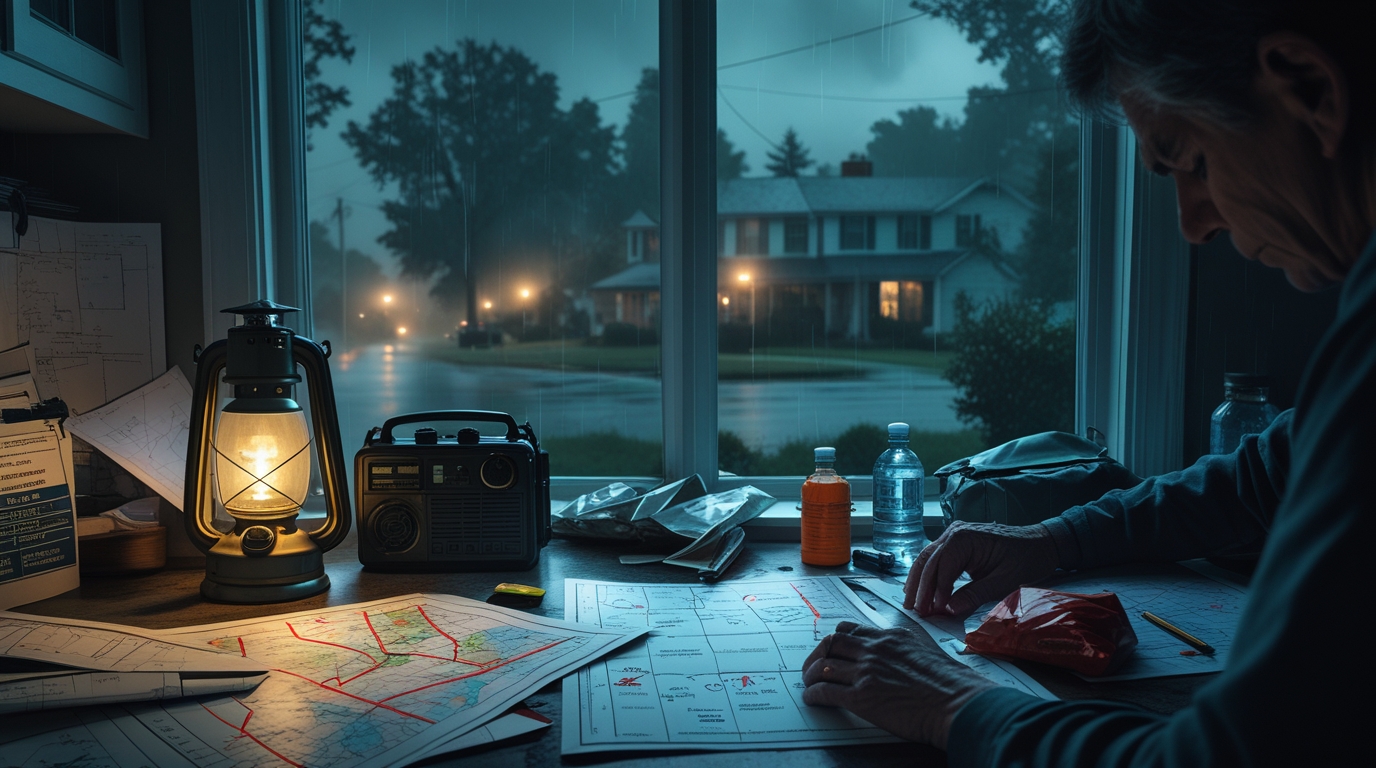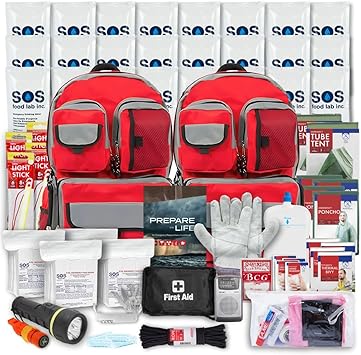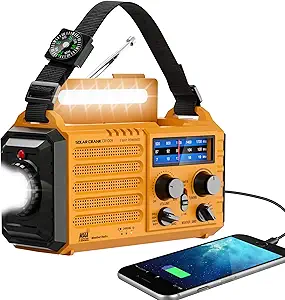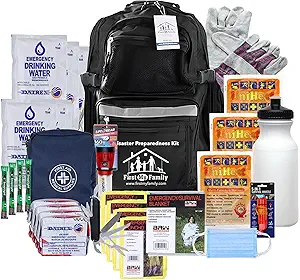How to Create an Emergency Plan for Your Family: A Step-by-Step Guide

How to Create an Emergency Plan for Your Family: A Step-by-Step Guide
Identifying Potential Hazards
Recognizing Local Risks
Understanding the types of emergencies most likely to occur in your area is the first step in preparing an effective family emergency plan. Whether it’s natural disasters like floods, earthquakes, and hurricanes, or human-made threats such as power outages and chemical spills, recognizing these risks is crucial. Researching local emergency preparedness resources can provide insights into region-specific hazards and recommended precautions.
Evaluating Your Home’s Vulnerability
Once you’re aware of the potential local hazards, the next step is assessing your home’s susceptibility to these emergencies. This involves inspecting your property for any structural weaknesses, ensuring smoke detectors and fire extinguishers are in working order, and identifying safe rooms for shelter during severe weather events. Taking preventative measures, such as securing heavy furniture and installing storm shutters, can significantly reduce the risk of injury and property damage.
Personalizing Your Plan
Given that every family is unique, tailoring your emergency plan to accommodate specific needs is vital. Consideration should be given to:
- Family members with special healthcare needs
- Pets
- The layout of your neighborhood
Creating a plan that addresses these personalized aspects ensures that everyone’s safety is accounted for in an emergency.
Establishing Communication Strategies
Designing a Family Communication Plan
In an emergency, staying connected with family members can be challenging, especially if you’re not together when disaster strikes. Developing a comprehensive communication plan involves:
- Selecting a family rendezvous point
- Choosing an out-of-town contact person
- Ensuring all family members have access to important phone numbers
Equipping each family member with a list of contacts and understanding the plan can make reuniting and staying informed much simpler.
Utilizing Technology to Stay Connected
Technology plays a significant role in communication during emergencies. Educate your family on using:
- Social media
- Emergency alert apps
- Text messaging services
These tools can help share updates and check in with each other. However, it’s also important to prepare for scenarios where technology may not be available, such as power outages, by having alternative communication methods in place.
Practicing the Communication Plan
Regular practice of your communication plan is as crucial as its creation. Conducting family drills that simulate emergency scenarios can help identify any gaps in your plan and ensure everyone understands their role. This might include practicing evacuating to your designated meeting spot or making a call to your out-of-town contact.
Packing an Emergency Kit
Essential Items to Include
An emergency kit is a critical component of your family’s preparedness strategy. At a minimum, your kit should contain:
- Water
- Non-perishable food
- A first-aid kit
- Flashlights
- Batteries
- Copies of important documents
- Special-needs items like prescription medications and baby supplies
Tailoring the contents to fit your family’s specific needs and the types of emergencies you’re most likely to face is essential for effectiveness.
Customizing Kits for Each Family Member
Creating personalized emergency kits for each family member, including pets, ensures that everyone has what they need to stay safe and comfortable. For children, consider adding familiar items to help reduce stress, such as favorite toys or books. For pets, include food, water, a leash, and any necessary medications.
Storing and Maintaining Your Kits
Proper storage and regular maintenance of your emergency kits are vital to ensure they’re ready when needed. Store kits in a cool, dry place and make sure every family member knows their location. Regularly check and replace expired items, and update your kits as your family’s needs change.
Establishing Safe Meeting Locations
Choosing Primary and Secondary Meeting Points
Identifying safe meeting locations is crucial in ensuring all family members know where to go if you’re separated during an emergency. Your primary meeting point should be easily accessible from your home, such as a nearby park or community center. However, it’s equally important to have a secondary location, preferably outside your immediate neighborhood, in case the primary spot is unreachable. Make sure these locations are familiar to all members and practice traveling to them during your family drills.
Importance of Accessibility for All Family Members
When selecting your meeting spots, consider the mobility of all family members, including those with disabilities or special needs. Ensure the locations are accessible for everyone, and plan for any additional resources or assistance some members might require to reach these points safely. This foresight can prevent confusion and ensure a swift, organized response during chaotic situations.
Crafting a Home Evacuation Plan
Mapping Out Escape Routes
A well-thought-out home evacuation plan involves mapping multiple escape routes from each room of your home. This ensures that, no matter where family members are when an emergency strikes, they have a clear path to safety. Draw a floor plan of your home and mark all possible exits, including windows and doors. Keep these routes free from obstructions and practice using them during your emergency drills.
Assigning Roles and Responsibilities
To streamline the evacuation process, assign specific roles and responsibilities to each family member. This could include tasks such as grabbing the emergency kit, ensuring pets are safely evacuated, or assisting younger or elderly family members. Clear assignments help reduce panic and ensure that important steps aren’t overlooked in the rush to evacuate.
Integrating Emergency Preparedness into Daily Life
Incorporating Safety Measures into Routine Activities
Emergency preparedness shouldn’t only be a topic of discussion when threats are imminent. Integrate safety measures and awareness into your family’s daily routine. For example, regularly check smoke detectors, practice shutting off your home’s main power, water, and gas supplies, and reinforce the importance of staying informed about local weather and emergency alerts. This constant vigilance can significantly enhance your family’s readiness.
Utilizing Educational Resources
Take advantage of the wealth of educational resources available to bolster your family’s emergency preparedness. Many local governments and organizations offer free courses, workshops, and materials focused on disaster readiness. Engaging in these educational opportunities together as a family not only increases knowledge but also reinforces the importance of preparedness in the minds of younger family members.
Advanced Preparedness Strategies
Special Needs and Accessibility Considerations
When tailoring your emergency plan, it’s crucial to factor in the needs of family members with disabilities or special needs. This includes ensuring that all emergency exits and safe spots are wheelchair accessible and that any communication plans accommodate those with sensory disabilities. For example, setting up a system that uses visual signals for someone who is deaf or hard of hearing can be a lifesaver. Moreover, preparing emergency kits with items specific to their needs, such as extra batteries for hearing aids or visual aids for those with vision impairments, ensures that everyone is equally prepared.
Pets and Animals in Emergencies
Pets are part of the family, and their needs should not be overlooked in your emergency plan. This means not only including them in your evacuation drills but also preparing a pet emergency kit stocked with food, water, veterinary records, and comfort items. Remember, some emergency shelters may not accept pets, so it’s important to have an alternative plan, such as pet-friendly hotels or a relative’s home where your pets can stay.
Technological Tools for Emergency Preparedness
Leveraging technology can significantly enhance your family’s emergency preparedness. Apps that monitor weather alerts, locate emergency shelters, or provide first-aid instructions can be invaluable in a crisis. However, it’s equally important to prepare for situations where technology might fail. Investing in solar-powered or hand-crank chargers for phones and radios ensures you remain informed and connected even if the power is out for an extended period.
Expert Tips for Maintaining Your Plan
Regular Review and Update Sessions
An emergency plan is not a set-it-and-forget-it project. It needs regular review and updates to remain effective. Schedule semi-annual meetings with your family to go over the plan and make any necessary adjustments. This includes updating contact information, revising escape routes, and refreshing the contents of your emergency kits. It’s also a good opportunity to discuss any changes in your family’s needs or in the local risk landscape.
Incorporating Emergency Preparedness into Family Culture
Building a culture of preparedness within your family means making emergency preparedness a regular part of conversations and activities. This can be as simple as discussing what to do in different types of emergencies over dinner or incorporating emergency drills into game nights. The goal is to ensure that preparedness becomes second nature to every family member, reducing panic and confusion during real emergencies.
Learning from Past Emergencies
One of the best ways to enhance your emergency plan is to learn from past experiences, both your own and others’. After any emergency situation, conduct a debrief with your family to discuss what worked, what didn’t, and how you can improve your response for next time. Additionally, paying attention to the experiences of others through news stories or community meetings can provide valuable insights and tips for refining your own plan.
Putting It All Together
Comprehensive Review and Practice
To ensure your family’s emergency plan is robust and effective, conduct comprehensive reviews that include walking through each component of the plan, from evacuation routes to communication strategies. Regularly practicing your plan in realistic scenarios helps identify any gaps and builds confidence in your family’s ability to respond effectively. Remember, the objective is not just to create a plan but to ensure every family member is prepared and empowered to act on it.
Next Steps for Continuous Improvement
Keep seeking knowledge and staying informed about best practices in emergency preparedness. This could involve participating in community preparedness events, taking advanced first-aid courses, or even volunteering with local emergency response teams to gain firsthand experience. As you continue to learn and grow, so too will your family’s ability to navigate emergencies with resilience and confidence.
Compare Products
Now that you’ve grasped the importance of being prepared for any emergency that could arise in your area, from natural disasters like earthquakes and hurricanes to human-made threats such as power outages, it’s crucial to consider the right gear to support your family’s safety plan. The Emergency Zone 4 Person Family Prep 72 Hour Survival Kit/Go-Bag stands out as a comprehensive option, designed to cover your family’s needs in the critical first 72 hours following a disaster. This kit is not only packed with essential supplies but now includes a bonus item to add even more value to your preparedness efforts.
Comparing this survival kit directly addresses your specific safety concerns and preparation needs. It allows you to evaluate whether this kit aligns with your family
| Feature / Product | Emergency Zone 4 Person Family Prep 72 Hour Survival Kit/Go-Bag | Emergency Radio with NOAA Weather Alert– 5000mAh Solar Hand Crank Portable… | First My Family All-in-One 4 Person, 72 Hour Emergency Survival Kit for… |
|---|---|---|---|
 |
 |
 |
|
| $79.99 | $49.67 | $199.95 | |
| Shop now → | Shop now → | Shop now → | |
| Technical Specifications | |||
| Brand | Emergency Zone | Eoxsmile | FIRST MY FAMILY A DISASTER PREPAREDNESS COMPANY |
| Wattage | N/A | N/A | N/A |
| Voltage | N/A | N/A | N/A |
| Battery Capacity | N/A | 5000mAh | N/A |
| Battery Life | N/A | N/A | N/A |
| Efficiency | N/A | N/A | N/A |
| Screen Size | N/A | N/A | N/A |
| Memory | N/A | N/A | N/A |
| Connectivity | N/A | USB | N/A |
